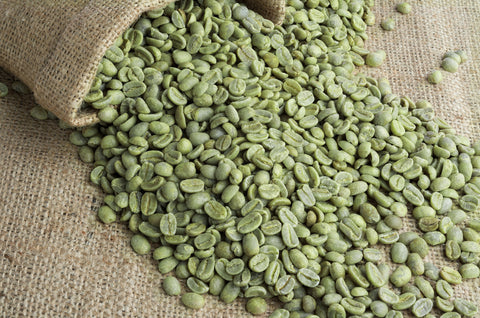Whether you’re an average coffee drinker, a barista, or a dedicated coffee enthusiast, you’ve probably heard people talk about, discussed the subject of, or read articles or blog posts about the caffeine content of coffee roasts or varieties. Some people swear that dark roasted coffee has less caffeine than lighter roasts, while others believe that the opposite is true. The confusion that surrounds discussions - whether written or spoken, about the caffeine content of coffee, is enough to make a person’s head spin. It’s time to get to the root of this debate and solve the dilemma about the amount of caffeine in coffee.
Clarifying Coffee Terminology
Forget about different levels of coffee roasting for the time being. There are two main coffee species: Arabica and Robusta. Many coffee experts and drinkers prefer the taste of Arabica beans because it’s smooth. But that superior taste comes with a higher price tag. The less expensive Robusta beans have a less pleasant taste. There are more than 3,000 different varieties of coffee that belong to the Arabica species. Roasters typically label single origin coffees with the country from which they come or a distinguishing feature like the name of the estate or farm on which the beans were grown.
When you buy a bag of whole bean or ground coffee, it often bears a label that describes the type of roast (i.e., light, medium, or dark). Unless the bag identifies the country of origin or estate where the beans are grown, you’re buying a coffee blend that might include any of the more than 3,000 varieties in the Arabica species.
Differences Between Arabica and Robusta Coffee Beans
Coffee trees or shrubs belonging to the Coffea genus. Arabica and Robusta are cultivars of that genus. Both species grow in places that lie between the Tropic of Cancer, which is located along a latitude line that lies at 23.5 degrees north, and the Tropic of Capricorn that lies at 23.5 degrees south. The equator lies between the two Tropics.
Arabica beans grow on a large bush that has oval-shaped dark-green leaves. The plants produce fruits called cherries. Each cherry yields two coffee beans. It typically takes between seven and nine months for the coffee beans to mature inside the fruit.
Robusta beans grow on a larger plant that can get as tall as 32 feet (or 10 meters.) The fruits of the Robusta species are round, but the seeds inside are smaller than Arabica beans, and they are oval. The fruits of Robusta shrubs or trees take longer (roughly 11 months) than the Arabica shrub to mature and produce coffee beans.
Arabica beans are more sensitive to temperature than Robusta beans, and they prefer a temperature range of between 59 degrees F and 75 degrees F, whereas Robusta beans will tolerate a range of between 75 and 86 degrees. Arabica beans prefer cool temperatures, so they don’t need as much water as Robusta beans. Both species need between 59 and 118 (1500 mm and 3000 mm) of rain per year. Robusta beans do well at lower altitudes and can grow anywhere from sea level to about 2600 feet. Arabica beans do better in hilly areas and at higher elevations.
The growing conditions have a direct impact on the flavor profile and quality of coffee beans. It could also have an impact on the caffeine content of the two cultivars.
In March 2009, an article in the Atlantic discussed the findings of studies that tested 90 different cultivars of Arabica beans. The results revealed that the caffeine content ranged from a low of 0.42% and a high of 2.9% which is roughly equal to around 84 to 580 mg of caffeine. A separate study looked at the caffeine content of Robusta beans and found that they have a significantly higher caffeine content with a range of between 1.16% and 4.0%, which is between 232 mg and 800 mg of caffeine.
A standard coffee scoop holds 10 grams or two tablespoons of ground coffee, so that’s what you’d use to make a 6 oz cup of coffee. To make a 12-ounce cup of coffee, you’d use 20 grams of coffee, which would be four tablespoons or two coffee scoops. If you were making coffee that has a 4% caffeine content, that cup would have you buzzing like a bee after loading you up with over 800 mg of coffee.
This evidence points to the fact that the darkness of a coffee roast has a relatively minor impact on the caffeine content because it is stable during the roasting process.
Light Roast Vs. Dark Roast - How They Differ
The significant distinguishing characteristics of dark roasted coffee are its darker color and the presence of oil that gives dark roasted beans a shiny appearance. Light roast coffee blends or single origin varieties are roasted at a lower temperature for a shorter period, a process that produces a brighter flavor and a higher acid content. The challenge that coffee roasters face when trying to produce a smooth and bolder-tasting dark roast is making sure that the beans aren't over roasted or burned.
The Bottom Line
If you’ve been choosing light or dark roast based on the assumption that one has a higher caffeine content, you’re likely wrong on both counts. It isn’t the color of the roast that determines the caffeine content. The primary determining factor is the coffee bean species. And the less expensive Robusta beans have more caffeine. If you want to get that caffeine buzz without having to sacrifice taste, look for a coffee blend that combines Robusta and Arabica beans such as our Rocket Fuel Blend and Dark Rocket Fuel Blend. You’ll find that our bulk coffee blends combine the best characteristics of multiple bean varieties.
Sources:
https://www.kickinghorsecoffee.com/en/blog/caffeine-myths-dark-vs-light
https://driftaway.coffee/caffeine/
http://www.thisisinsider.com/light-roast-coffee-versus-dark-roast-coffee-difference-2017-4
https://www.huffingtonpost.com/entry/coffee-roast-caffeine_us_576c8725e4b017b379f57ff8
https://scribblerscoffee.com/blogs/news/which-has-more-caffeine-light-or-dark-roast
http://www.myrecipes.com/extracrispy/does-light-or-dark-roast-coffee-have-more-caffeine
https://www.theatlantic.com/health/archive/2009/03/appreciating-coffee-like-wine/1404/
http://www.ncausa.org/Health-Caffeine
https://www.sciencedirect.com/science/article/pii/S0278691515001039
https://www.zagat.com/b/the-difference-between-light-and-dark-roast-coffee
http://www.ncausa.org/About-Coffee/Coffee-Roasts-Guide
